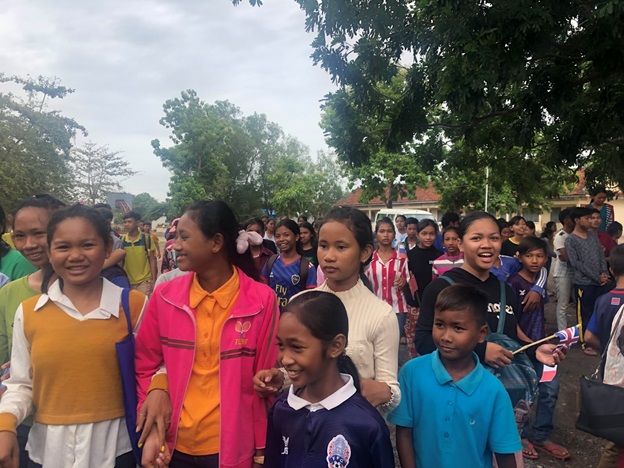During the summer, many organizations and churches take time to visit the underprivileged and complete acts of kindness through service trips. From raising money to teaching the uneducated, many organizations visit developing countries to help those in need. However, some developing countries are not given as much attention as others. Many organizations may visit Africa, India, Mexico, and many others. However, places like Cambodia are not visited as often and fewer people are aware of their situation.

[Source: Author, Sharon Pak]
During the Khmer Rouge, schools, churches, and government buildings were shut down and used as prisons. Also, Cambodians were not allowed to show affection to their families, and they had to obey the top leader, Pol Pot, who didn’t want Cambodians to depend on modern inventions. Also, Pot wanted to change Cambodia into a classless country with no rich or poor people. Anyone seen as intellectuals, political leaders, or educated were executed.
However, even after the Khmer Rouge, Cambodia is still far from being healed. According to a blog from The Borgen Project, 70% of the population in Cambodia do not have access to clean water and around 32% of the children under 5 in Cambodia are stunted. Cambodia does not have enough resources, and many are dying because of nutrition deficiency and poor healthcare.

[Source: Author, Sharon Pak]
I, myself, have recently just found out about Cambodia’s struggles through a program called TASSEL in which I was able to visit Cambodia for a total of 10 days. As I was attending my service trip to Cambodia, I was able to visit some of the prison camps, like the Killing Fields and Tuol Sleng. It was an eye-opening experience that really helped me realize how much pain the Cambodians really went through.
Also, I was given the opportunity to teach children English, pass out clothes and medicine, and visit struggling families. I visited a total of four families, and they all had no electricity or clean water. The children were left to live with their grandparents because their own parents ran away and this is a common situation in Cambodia. Not only that, their houses were literally shacks and it was amazing how they were still able to smile with their current condition.
This service trip has inspired me to write an article about Cambodia’s situation and raise awareness. I feel that it is crucial to focus on a variety of third world countries and not only the ones that people are familiar with. Hopefully, more people will be aware of Cambodia’s current situation and strive to make a difference.
Sharon Pak, Grade 12
Crescenta Valley High School

